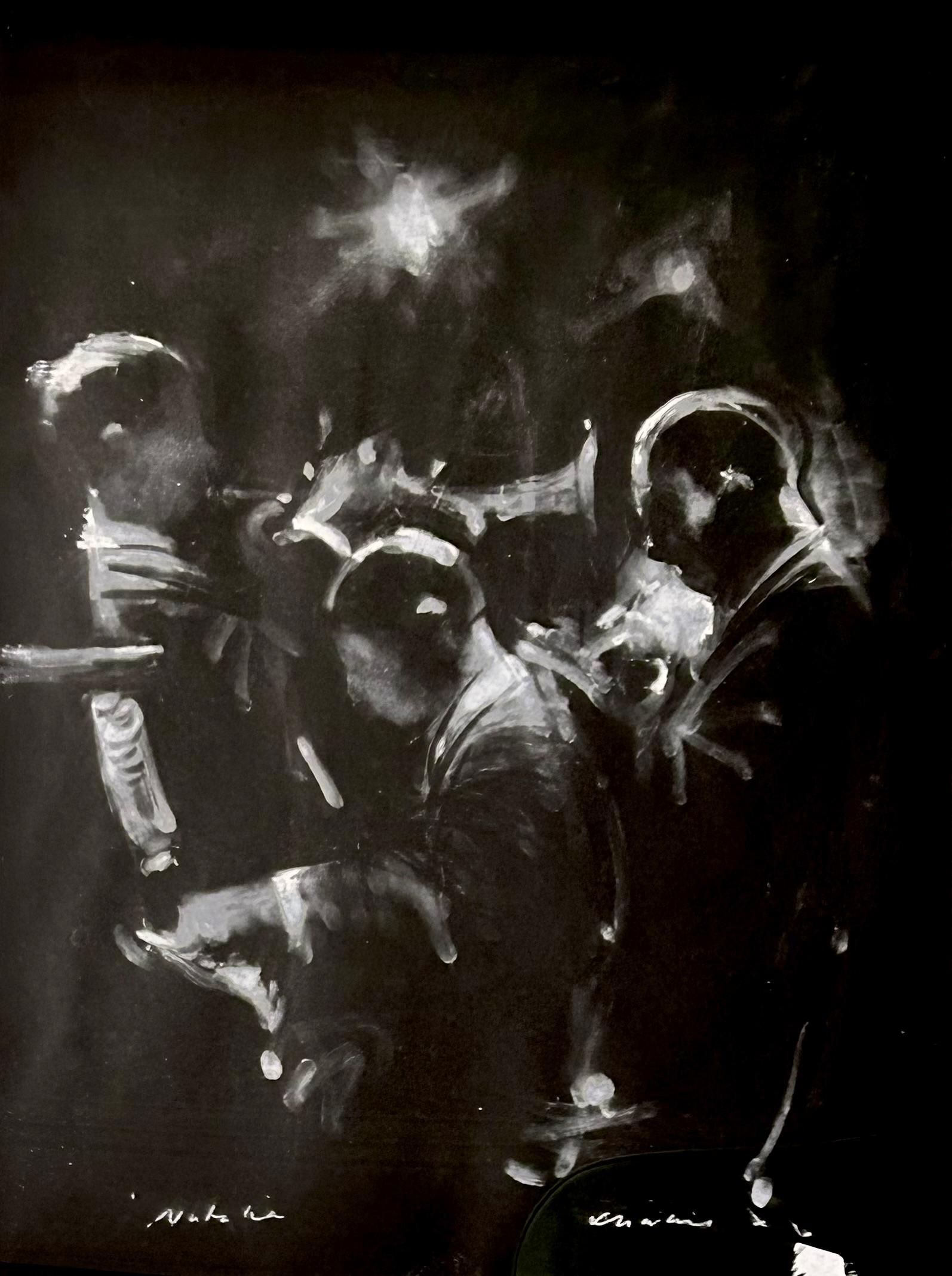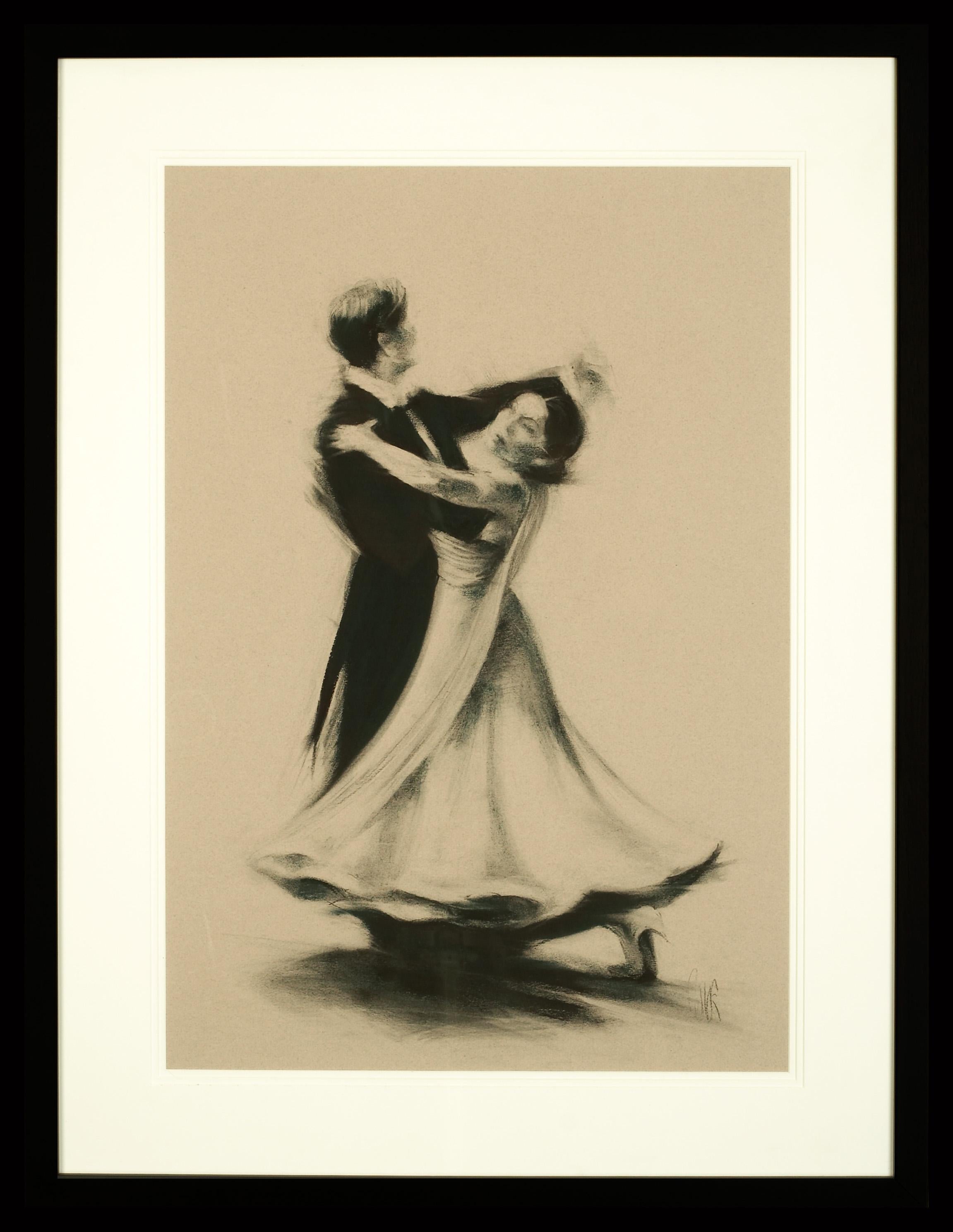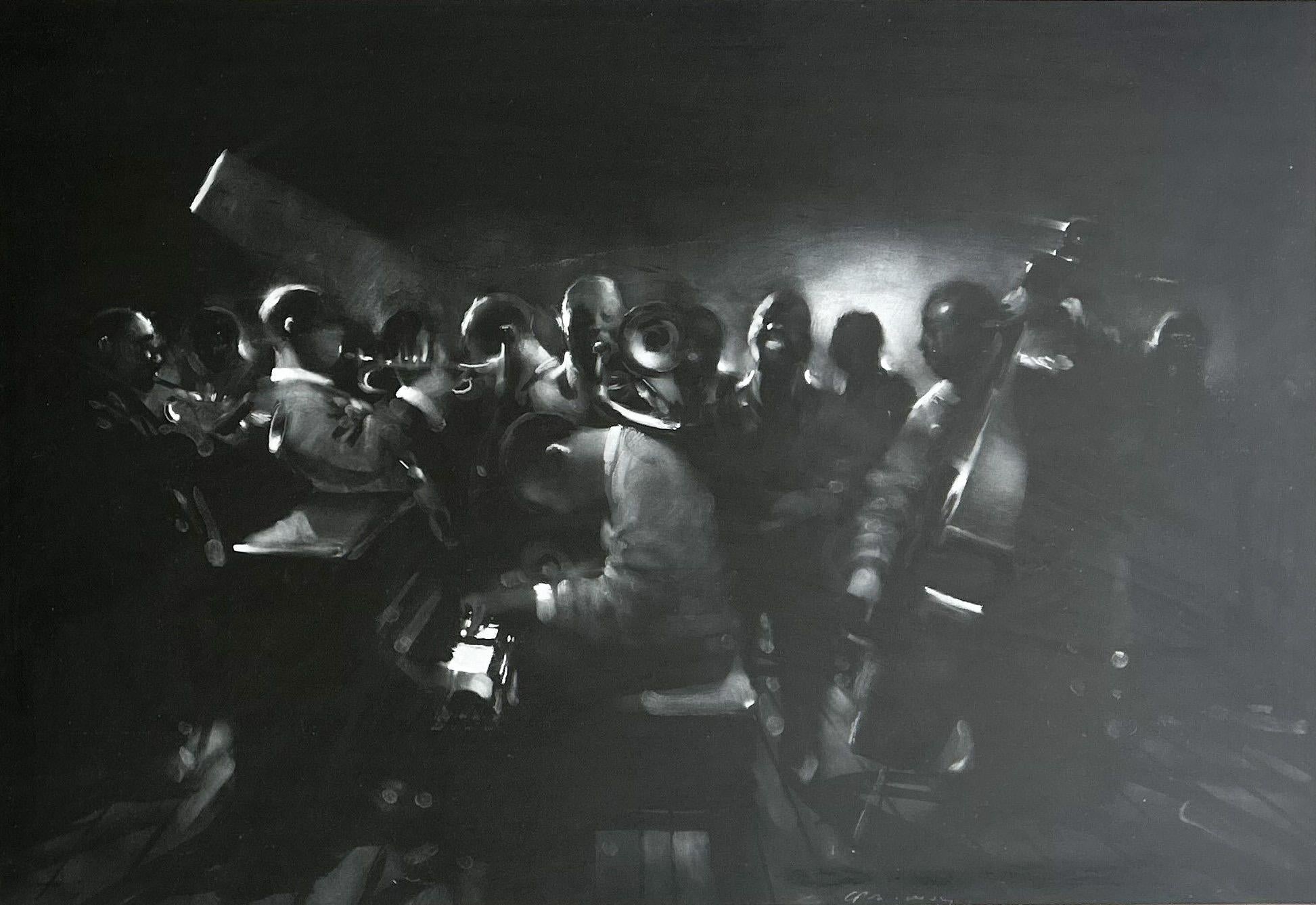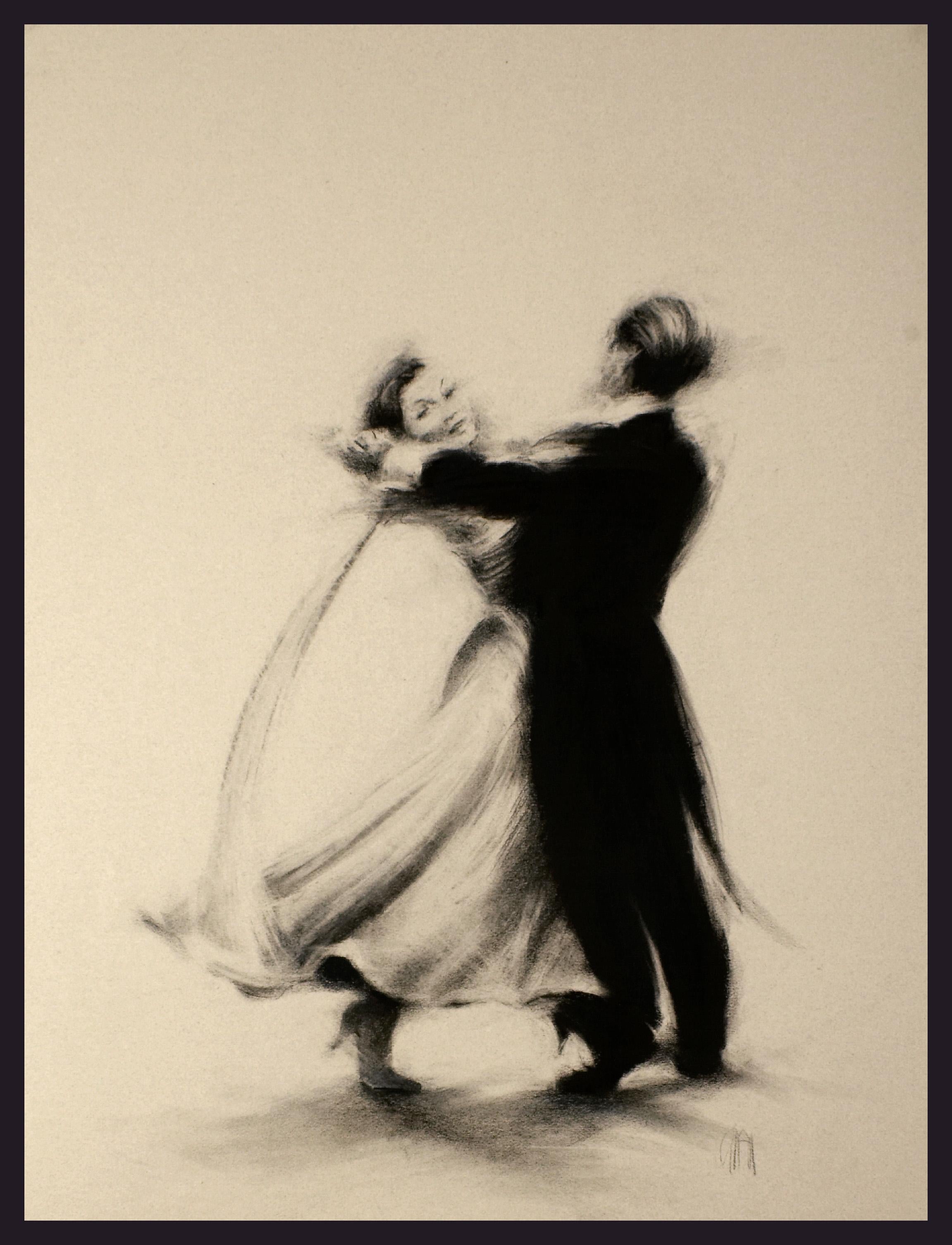Items Similar to William Glackens Drawing Titled "M. Durand... Arrived on the Scene", Dated 1903
Want more images or videos?
Request additional images or videos from the seller
1 of 5
William GlackensWilliam Glackens Drawing Titled "M. Durand... Arrived on the Scene", Dated 19031903
1903
About the Item
William Glackens, 1870-1938
M. Durand... Arrived on the Scene, 1903
Ink, wash, charcoal and Chinese white on paper
Signed (at lower left): W. Glackens
Recorded:
Allyn, Nancy E. and Elizabeth H. Hawkes. William Glackens, A Catalogue of his Book
and Magazine Illustrations. Wilmington, Delaware: Delaware Art Museum, 1987, no.
1004.
This drawing was used as an illustration for de Kock, Charles Paul; St. Gervais, ed., Jean
Boston: Quinby, 1903, vol. 1, p. 113.
The drawing Monsieur Durand…Arrives on the Scene is one of the illustrations that the Glackens created for the first volume of C.P. de Kock’s novel Jean. The picture depicts a colorful tale of youthful mischievousness in middle-class Parisian life. In the story, Madame Durand decides that her son, the protagonist Jean, is destined to be an opera star; accordingly, she insists that he take music and dance lessons. An only child and somewhat spoiled, Jean vows to undermine his mother’s efforts, an undertaking which he successfully accomplishes one night at the weekly ball convened by his dancing-master, M. Mistigris, in his flat. While Mistigris is playing the prelude of the “Pantalon” and his company is dancing a quadrille of sixteen, Jean withdraws a fistful of fulminating peas from his pocket and throws them onto the dance floor. Even as the peas are still exploding and eliciting shrieks of fear from the ladies, Monsieur Durand suspects his son is the culprit and calls for the maid to stop Jean’s escape. The ensuing scene is represented in the drawing.
Unlike the images he produced for newspapers, which required from him firsthand observation, Glackens produced book illustrations from the story’s verbal clues, relying on his mastery of anatomical accuracy and keen awareness of distinctive personalities. M. Durand…Arrives on the Scene is a wonderful example of Glackens’ ability to discern and visually re-create eccentric temperaments. Rendered in the artist’s gritty, urban realist style, the picture is a witty, yet gentle caricature of both the lower and middle classes. The drawing focuses on a perplexed M. Durand who, brandishing a lit torch and waving his cane in the air, barges into the antechamber of the dancing-master’s apartment and encounters an unexpectedly frenetic scene. Shrouded in darkness, for Jean had previously blown out the candle, the characters that had one after another given chase to the young troublemaker are sprawled across the floor. M. Durand’s light reveals the cause of their dismay, two thick cords, unable to be detected in the darkness, had been strung across the room.
At the lower right, M. Mistigris fumbles on his back like a turtle trying to right itself, with his violin and bow still in hand. His right leg remains entangled with the cord, while his face expresses befuddled panic at the situation in which he finds himself. Immediately behind him, Madame Mouton, the most indefatigable of all the dancers and the obsequious mother of the three young ladies standing behind M. Durand, lies flat on
her stomach with her ample backside high in the air; her pale face conveys shock and humiliation. At the far left, the maid Nanette rests on her hands and knees with her mouth wide open, aghast at her compromising position on the floor. Glackens’ artistic style, characterized by swift, intuitive strokes, excellently captures the animated, unruly scene of Charles Paul de Kock’s story. In executing the drawing, the artist created an impressive range of tonalities by using ink, wash, charcoal and Chinese white. Delineating the scene with bold strokes of charcoal, the artist then endowed the figures with depth and shadows through his skillful use of ink wash and white color highlights. Ultimately, M. Durand…Arrives on the Scene exemplifies the artist’s keen talent for giving life to convincingly unique characters within a complex, multi-figure
composition.
- Creator:William Glackens (1870-1938, American)
- Creation Year:1903
- Dimensions:Height: 15.35 in (38.99 cm)Width: 10 in (25.4 cm)Depth: 1 in (2.54 cm)
- Medium:
- Period:
- Condition:
- Gallery Location:New York, NY
- Reference Number:1stDibs: LU2157211705852
About the Seller
No Reviews Yet
Vetted Seller
These experienced sellers undergo a comprehensive evaluation by our team of in-house experts.
1stDibs seller since 2022
- ShippingRetrieving quote...Ships From: New York, NY
- Return PolicyThis item cannot be returned.
More From This SellerView All
- William Glackens Charcoal on Paper Drawing, Dated 1902By William GlackensLocated in New York, NYWilliam Glackens, 1870-1938 Dubourg Drew from his Basket his Mechanical Syringe, 1902 Charcoal, gouache and white chalk on paper Signed (at bottom cen...Category
Early 1900s Figurative Drawings and Watercolors
MaterialsCharcoal
- William Glackens Watercolor on Paper, "Criticizing Ernest Lawson’s Art Class"By William GlackensLocated in New York, NYWilliam Glackens, 1870-1938 Criticizing Ernest Lawson’s Art Class, ca. 1907 Watercolor and pencil on paper Signed (at lower left): Glackens Inscribed ...Category
Early 1900s Figurative Drawings and Watercolors
MaterialsWatercolor
- Arnold Rönnebeck Graphite on Paper Drawing, "I’m a Little Blackbird", ca. 1924By Arnold RönnebeckLocated in New York, NYArnold Rönnebeck, 1885 – 1947 I’m a Little Blackbird..., c. 1924 Graphite on paper Estate stampCategory
1920s Figurative Drawings and Watercolors
MaterialsGraphite
- Etching on Paper by John Sloan Titled 'Shine, Washington Square', 1923By John SloanLocated in New York, NYJohn Sloan, 1871-1951 Shine, Washington Square, 1923 Etching 5 X 7 inches Sloan-5 Signed lower right: “John Sloan” and Titled by the artist lower center: “Shine, Washington Square” Recorded: Peter Morse. John Sloan’s Prints...Category
1920s Figurative Drawings and Watercolors
MaterialsEtching
- Watercolor Painting of the Monseigneur News Theatre, by Reginald Marsh, 1925By Reginald MarshLocated in New York, NYReginald Marsh, 1898 – 1954 Monseigneur News Theatre, 1925 Signed and dated at lower right: 'Reginald Marsh 1925' Watercolor on card 8 x 11 inches Born in Paris to parents who were American artists, Reginald Marsh became an adept illustrator at an early age. His family returned to the United States in 1900. Upon graduating from Yale University, Marsh moved to New York and in 1922 took a job as an illustrator at the New York Daily News. For the paper he provided cartoons of vaudeville and burlesque shows. In 1925 Marsh went to work for a new magazine -- The New Yorker -- as one of its original cartoonists. That same year he married Betty Burroughs, daughter of the paintings curator at the Metropolitan Museum of Art. Later that year they traveled to Europe where Marsh discovered the work of the old masters at the Louvre in Paris and British museums. With a sketchbook always on hand, he wandered the streets of Europe and began depicting bums or what he called figures of failure. Upon the couple’s return, Marsh, now with a serious interest in pursuing art, enrolled at the Art Students League where he studied under George Luks, John Sloan, and Kenneth Hayes Miller. This work, Monseigneur News Theatre, is accompanied by a letter from Marsh Scholar Professor Norman Sasowsky, University of Delaware...Category
1920s Figurative Drawings and Watercolors
MaterialsWatercolor
- Graphite on Paper Drawing by John Sloan Titled 'The New Hat', circa 1912By John SloanLocated in New York, NYSloan, John, 1871-1951 The New Hat, c. 1912 graphite on paper 12 X 10 inches signed l.l. “John Sloan (per HFS)” inscribed by Helen Farr Sloan. Sloan-1 Provenance: The artist, Priva...Category
1910s Figurative Drawings and Watercolors
MaterialsGraphite
You May Also Like
- Jazz Trio - Charlie Mackesy, Original Pastel, Musician, Instruments, BritishBy Charlie MackesyLocated in Knowle Lane, CranleighAn original pastel-on-paper drawing by British artist Charlie Mackesy - Mackesy's clever work and style here, provide us with a glimpse into this atmospheric depiction of a Jazz Trio...Category
21st Century and Contemporary Contemporary Figurative Paintings
MaterialsCharcoal, Pastel
- Cellist - Charlie Mackesy, Original Pastel, Musician, Instrument, Dark, BritishBy Charlie MackesyLocated in Knowle Lane, CranleighAn original pastel-on-paper drawing by British artist Charlie Mackesy - depicting the motion of a musician playing the Cello. Mackesy instantly draws y...Category
21st Century and Contemporary Contemporary Figurative Paintings
MaterialsCharcoal, Pastel
- Ballroom Dancers - Charcoal, Figurative, Fabric, Movement, Human Form, BritishBy Trudy GoodLocated in Knowle Lane, CranleighBallroom Dancers by Trudy Good. Original Charcoal & Pastel onto paper. Trudy Good is a British figurative painter who has exhibited in numerous plac...Category
Early 2000s Academic Figurative Drawings and Watercolors
MaterialsPastel, Charcoal
- Untitled (Jazz Scene) - Charlie Mackesy, Original Pastel, Musician, InstrumentsBy Charlie MackesyLocated in Knowle Lane, CranleighUntitled (Jazz Scene) is an original Charcoal & pastel drawing on paper by British artist Charlie Mackesy. Mackesy's clever work and style here give us a glimpse into this intimate &...Category
21st Century and Contemporary Contemporary Figurative Paintings
MaterialsCharcoal, Pastel
- Ballroom Dancers II - Charcoal, Figurative, Fabric, Movement, Human FormBy Trudy GoodLocated in Knowle Lane, CranleighBallroom Dancers II by Trudy Good. Original Charcoal & Pastel onto paper. Trudy Good is a British figurative painter who has exhibited in numerous pla...Category
Early 2000s Academic Figurative Drawings and Watercolors
MaterialsCharcoal, Pastel
- Early 19th Century French Salon Portrait Drawings, a PairLocated in Rochester, NYPair of antique classical French salon drawings. Charcoal on paper. Illegibly signed. In giltwood frames, early 19th century. # grand tourCategory
Early 19th Century Realist Figurative Paintings
MaterialsCharcoal





